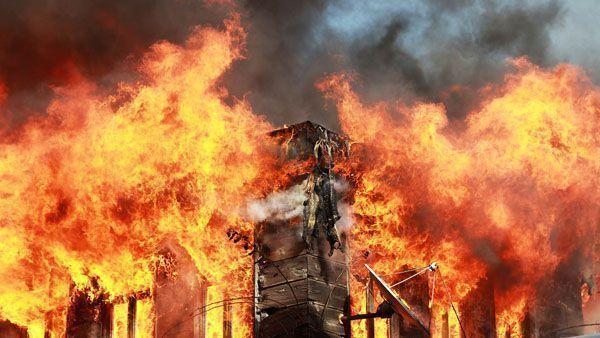The 4 methods of extinguishing fires

Know how to put out a fire It can be vital to our survival, as we never know when a large-scale fire may break out and whether we might find ourselves caught in that unfortunate situation. It is also useful in preventing small fires from spreading. forest fires or urban areas continue to worsen.
Fire extinguishing methods
Following this principle, we can relate and summarize the different fire fighting techniques in four. What are the 4 ways to put out a fire?
Fuel disposal
We are faced with the first method of extinguishing fire. As clearly indicated, it is when fuel is removed from combustion, such as when the supply valve of the system that supplies combustible gas or a combustible liquid is closed. From the point of view of fire prevention, it is important to adopt measures such as the removal of waste and cleaning of the workplace, the substitution of raw materials for less flammable ones, the dilution of mixtures or natural or forced ventilation.
Suffocation
It's when oxygen is removed from combustion, such as when a frying pan is covered with burning oil, when a bonfire is covered with earth or when a person whose clothes are on fire is covered with a blanket. In industrial environments, from a prevention point of view, this means carrying out certain work in atmospheres inertized, that is, with a low proportion of oxygen.
Inhibition
The chain reaction is eliminated. The free radicals of the extinguishing agent react with the free radicals of combustion in an endothermic reaction, which absorbs heat and breaks the chain reaction. ABC Multipurpose Powder fire extinguishers are based on this principle. From the point of view of prevention, this means adding antioxidant substances to the raw materials or using fireproof fabrics.
Refrigeration
In this case The extinguishing agent absorbs heat from the combustionn, as the heat energy decreases, the oxy-reduction process slows down and even comes to a standstill. This would be the case as in the previous example of the ABC Multipurpose Powder or water extinguisher.
What did you think of the different ones? types of fire extinguishing? Let's provide a series of examples.
- As for the fuel disposal, An example of this fire suppression method would be removing dry vegetation around a structure to create a fire strip.
- In relation to the suffocation, An example might be using foam to cover the surface of the fire and prevent air from entering.
- And what about the inhibitionAn example of this fire extinguishing technique would be to use fire retardants in structures to make them less flammable.
- Refrigeration: A clear example that we see in every fire is spraying water with a helicopter on a forest fire to reduce the temperature of the ground.
How does a fire start?
As we mentioned at the beginning of the post, a fire is produced through a chemical process, which we call combustion. Basically, it is known as the fire triangle and is made up of:
- Fuel: Basically, it is any liquid, solid or gas that can burn. For example, we can mention wood, paper or fabric.
- Oxidizing agent: As a general rule, it is oxygen present in the air, which is the element that allows combustion to occur. If there is no oxygen, a fire would be unlikely.
- Heat source: As its name suggests, it is any spark, flame or hot surface that comes into contact with the fuel and raises its temperature to the ignition point.
Process by which a fire is produced
We have already met the ways to put out the fire, but now you will discover the stages or cycles that a fire goes through. For example, we have previously mentioned ignition, but do you know what we are referring to? Let's find out what happens when the three elements that cause a fire come together:
- Ignition: moment when the heat source, such as a flame, comes into contact with the fuel and raises its temperature.
- Spread: Flames spread very quickly through the fuel if there is sufficient oxygen.
- Growth: The more fuel and oxygen, the bigger the fire will become.
- Decay: Whether naturally or intentionally, the fire will eventually run out of fuel or the heat source will go out. As a result, the fire will gradually die out.
Now, you also know the different phases of a fire.
Source: https://meddi.com.mx/tendencias-en-salud-ocupacional-2024-innovacion-y-bienestar-en-el-trabajo/


